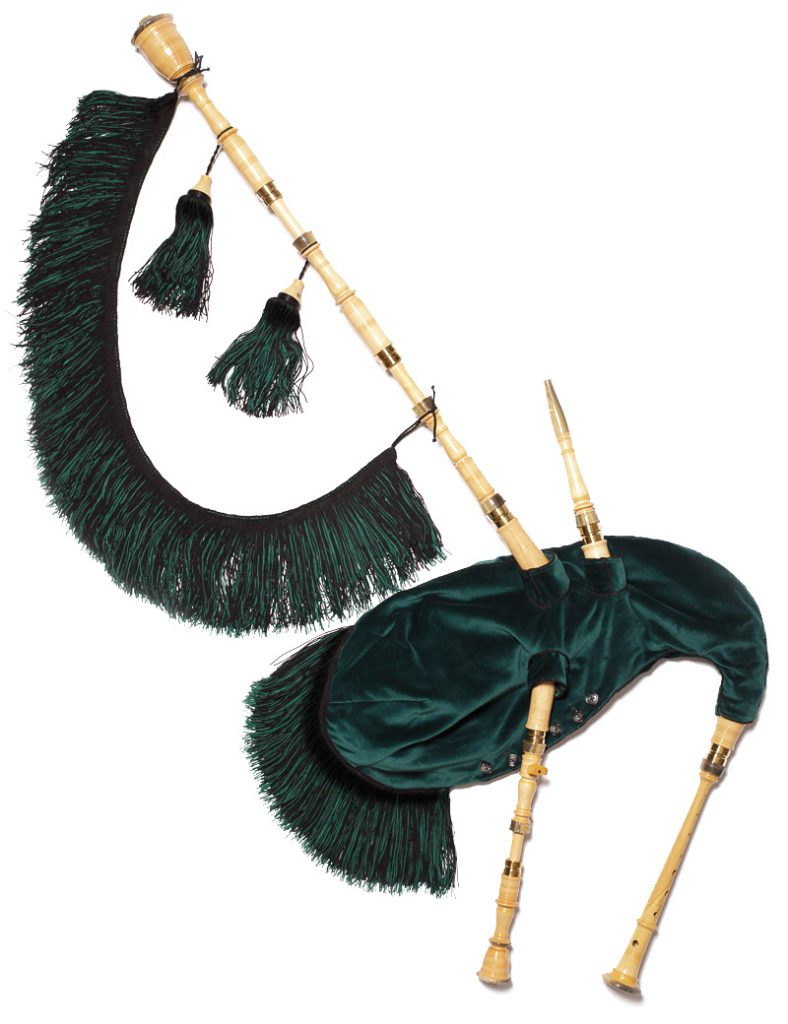
Origins and etymology
The Galician gaita is the traditional instrument of Galicia and northern Portugal. The word gaita is used across northern Spain as a generic term for “bagpipe”, although in the south of Spain and Portugal it denotes a variety of horn, flute or oboe like instruments according to region.There are many suggestions as to the origin of the name gaita. It has been compared to the names of eastern European bagpipes, such as gaida, gajda, and gajdy. The linguist Joan Coromines has suggested that the word gaita most likely derived from a Gothic word gait or gata, meaning “goat”; as the bag of a gaita is made from a whole, case-skinned goat hide. Gothic was spoken in Hispania from the fifth century to the eighth century when the country was ruled by the Visigoths. The Visigoths originated in north-eastern Europe.
2
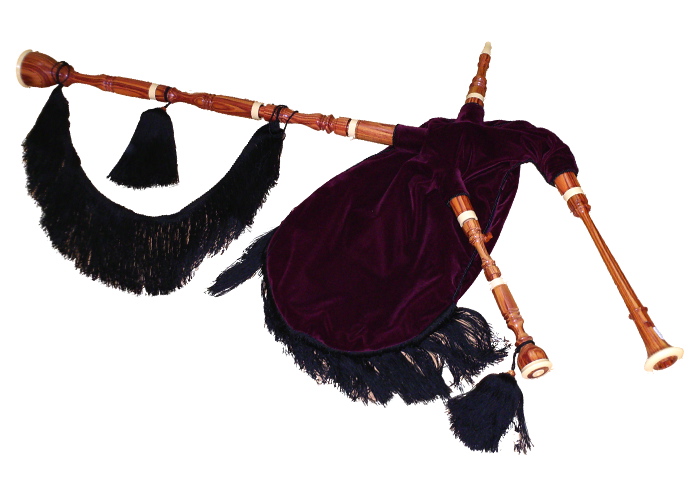
Description
The player inflates the bag using his mouth through a tube fitted with a non-return valve. Air is driven into the chanter with the left arm controlling the pressure inside the bag. The chanter has a double reed similar to a shawm or oboe, and a conical bore with seven finger-holes on the front. The bass drone is situated on the player’s left shoulder and is pitched two octaves below the key note of the chanter; it has a single reed. Some bagpipes have up to two more drones, including the ronquillo or ronquilla, which sticks out from the bag and plays an octave above the ronco, or the smaller chillón. These two extra drones are located next to the right arm of the player.
4
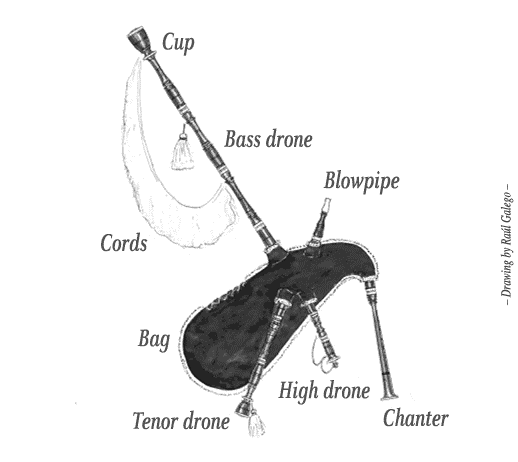
Description
The finger-holes include three for the left hand and four for the right, as well as one at the back for the left thumb. The chanter’s tonic is played with the top six holes and the thumb hole covered by fingers. Starting at the bottom and (in the Galician fingering pattern) progressively opening holes creates the diatonic scale. Using techniques like cross-fingering and half-holing, the chromatic scale can be created. With extra pressure on the bag, the reed can be played in a second octave, thus giving range of an octave and a half from tonic to top note. The chanter has a double reed similar to a shawm or oboe, and a conical bore with seven finger-holes on the front. It is also possible to close the tone hole with the little finger of the right hand, thus creating a semitone below the tonic.
6
Video:
https://www.youtube.com/watch?v=KTlZxAN0YsM&ab_channel=StanislavDvorets
7
Famous Galician bagpipers:
-
Avelino Cachafeiro
-
Perfecto Feijoo
-
Os Campaneiros
-
Moxenas
-
Os Rosales
-
Carlos Núñez
-
Anxo Lorenzo
-
Xosé Manuel Budiño
-
Cristina Pato
-
Susana Seivane
-
Carlos Meiga
8
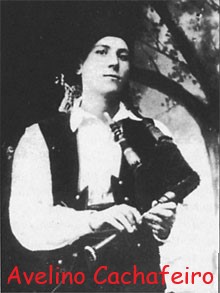
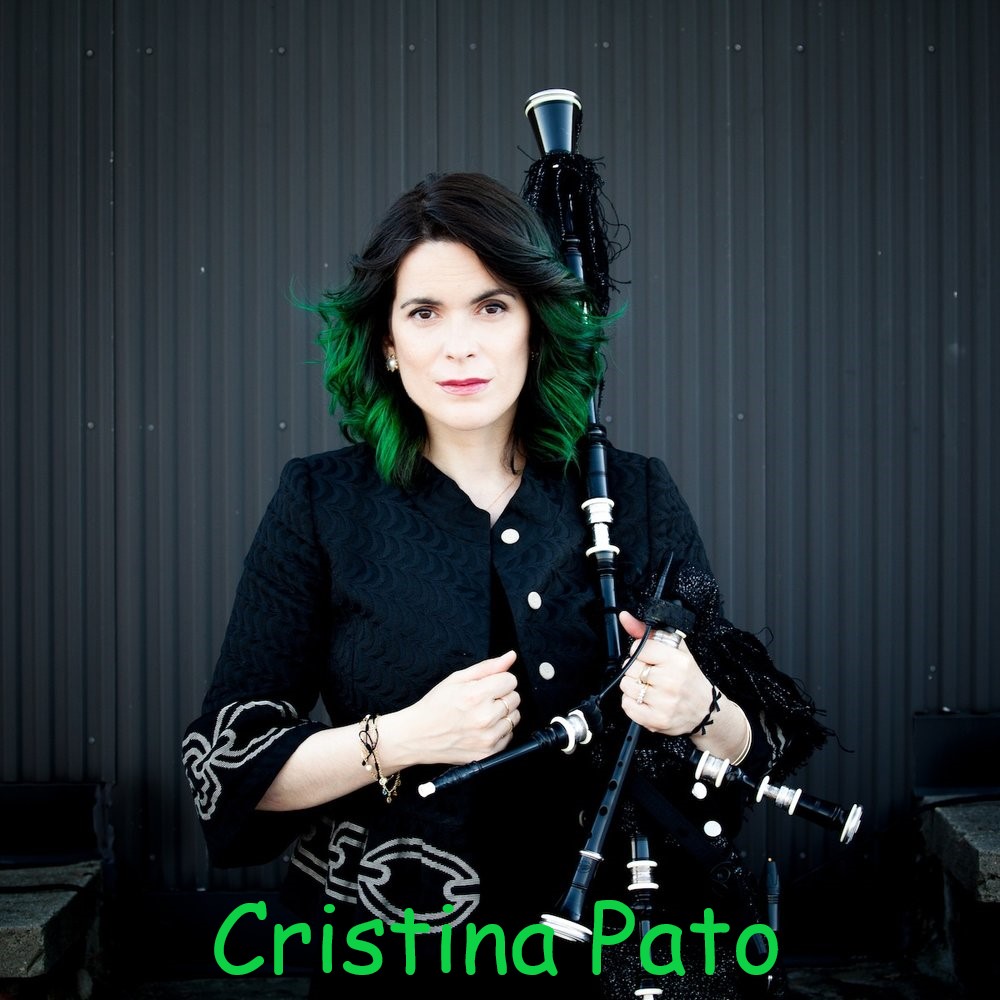


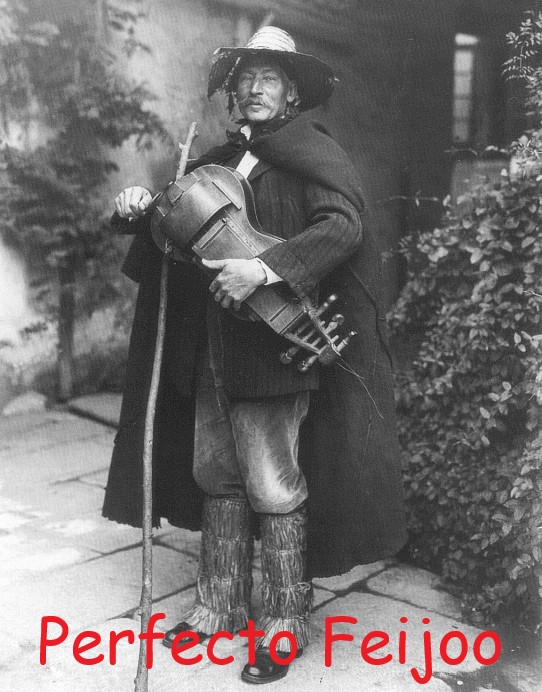
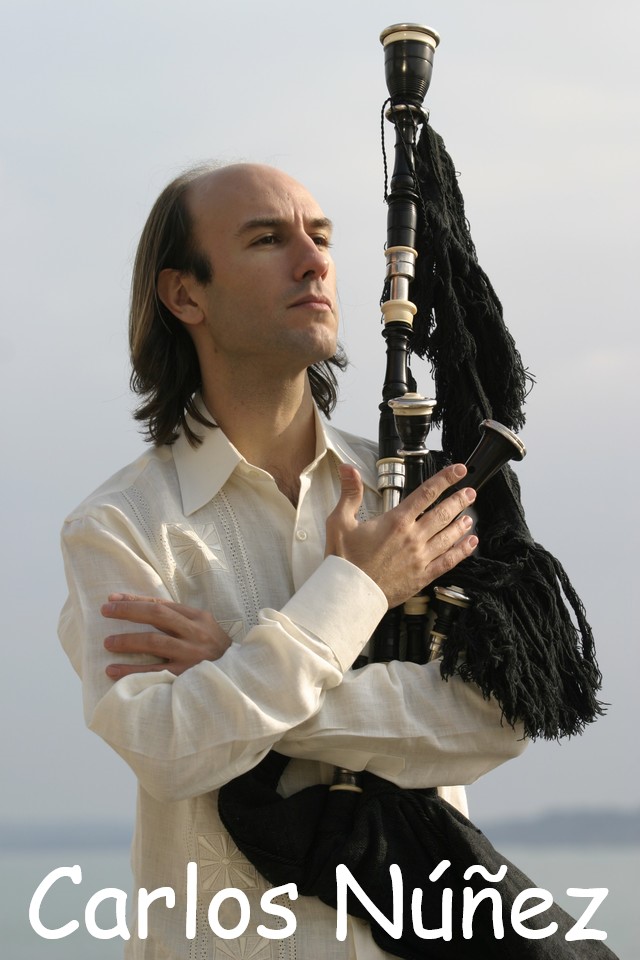
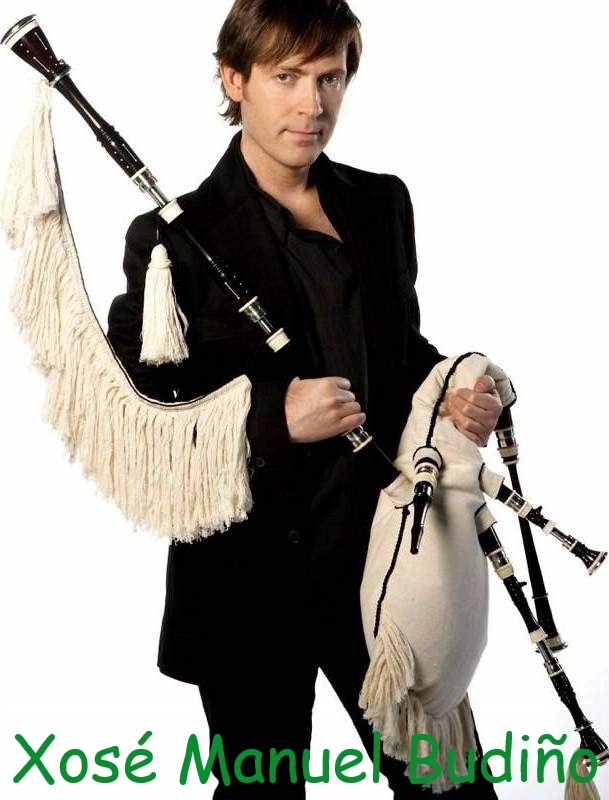
The Evolution of the Instrument
It can be observed that in old gaitas, preserved in museums and personal collections, the construction tended to be coarse or ‘rustic’. This is probably due to the precariousness of the tools used and not the craftsmen themselves, who displayed their skill and musical knowledge in their legacy. At present, the manufacturing techniques and machinery used have evolved in such a way that measures and precision are achieved that would have been unthinkable in other periods. However, it continues to be the craftsman’s expertise that is responsible for the integrity of the instrument he makes. Although the basic design of the gaita has not changed substantially, the carving has been tailored to the current tastes, noble materials such as alpaca or silver are used for ring caps and they are carved, engraveed or encrusted carefully with nacre, silver or other natural or synthetic components to give many of these instruments a truly artistic finish.
16
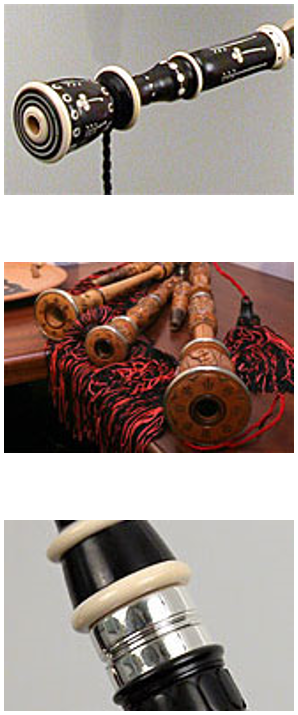
Quiz time!
1. The Galician gaita originates from:
a) Scotland
b) Galicia/northern Portugal
c) Spain
2. How many finger holes does the Galician gaita have?
a) seven
b) eight
c) six
3. What is the Galician gaita made of?
a) sheep hide
b) boxwood, cornel wood, plum wood or other fruit wood
c) goat hide
18
Prepared by:
Yanitsa Bogdanova
Todor Tsekov
Teodor Petkov
Tanya Petkova
Teodora Tosheva
Sources:
Info:
https://en.wikipedia.org/wiki/Galician_gaita
https://seivane.es/en/documentacion/index2.html
Video:
//www.youtube.com/watch?v=KTlZxAN0YsM&ab_channel=StanislavDvorets
Pictures:
https://commons.wikimedia.org/wiki/Main_Page
19

Published: Nov 16, 2021
Latest Revision: Nov 16, 2021
Ourboox Unique Identifier: OB-1228620
Copyright © 2021








